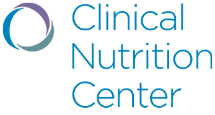Q: What is the difference between OPTIFAST, Modified Fast, Advanced and Exchange Programs?
A:
- An Exchange Program is a full balanced diet including all food groups. These can be very individualized and developed to achieve a variety of results and calorie levels. This program is particularly effective for the individual desiring up to 10% weight loss.
- An Advanced Program is rich in protein but very low in carbohydrate and fat, giving a simpler and quicker weight loss than the Exchange Program. Individuals eat lean protein (this can be real food or high quality protein supplements), plenty of vegetables, 1 fruit and 1 dairy a day, giving a pace of weight loss close to the fasting programs but with much more variety. This program is very popular for individuals desiring 10-15% weight loss.
- A Modified Fast provides primarily protein and a small side salad, while restricting the rest of foods. While solid food is emphasized, protein supplements may be used as well. It puts an individual into ketosis as it is so low in carbohydrate; thus, prescription potassium supplementation is necessary. Typically the calorie count is approximately 800 calories per day with less than 50 grams of Carbohydrate. Weight loss of 20% or more is possible with a fasting program.
- OPTIFAST®is a brand-name program developed and supported by Nestle. OPTIFAST Products may be used for a full meal replacement, similar to Nutrifast, or for partial meal replacement (“Jump Start” Program). OPTIFAST Products are somewhat different than those used in our Modified Fast Program in that they are nutritionally complete and designed NOT to put an individual in to ketosis. Typically the calorie count is 800-1200 calories per day, and the carbohydrate count is closer to 100 gm per day.The OPTIFAST program relies on stimuli-narrowing. By only offering only a few flavors, an individuals appetite is significantly curved and therefore appetite control medications are generally not necessary on these protocols. Further, because the OPTIFAST products are nutritionally complete and because the carbohydrate level is not as low, potassium and vitamin supplementation is generally not necessary.OPTIFAST Programs have been successfully used in over 1 million individuals in the United States. The typical OPTIFAST patient with a starting BMI of 39 loses 52 pounds in 20 weeks. 75 or even 100 pounds or more is possible with this approach.
For a patient with a substantial amount of weight to lose (BMI > 40, or > 35 with other risk factors), especially if considering a bariatric surgery such as Lap Band or Gastric Bypass, an OPTIFAST Program is a good alternative to try instead.
